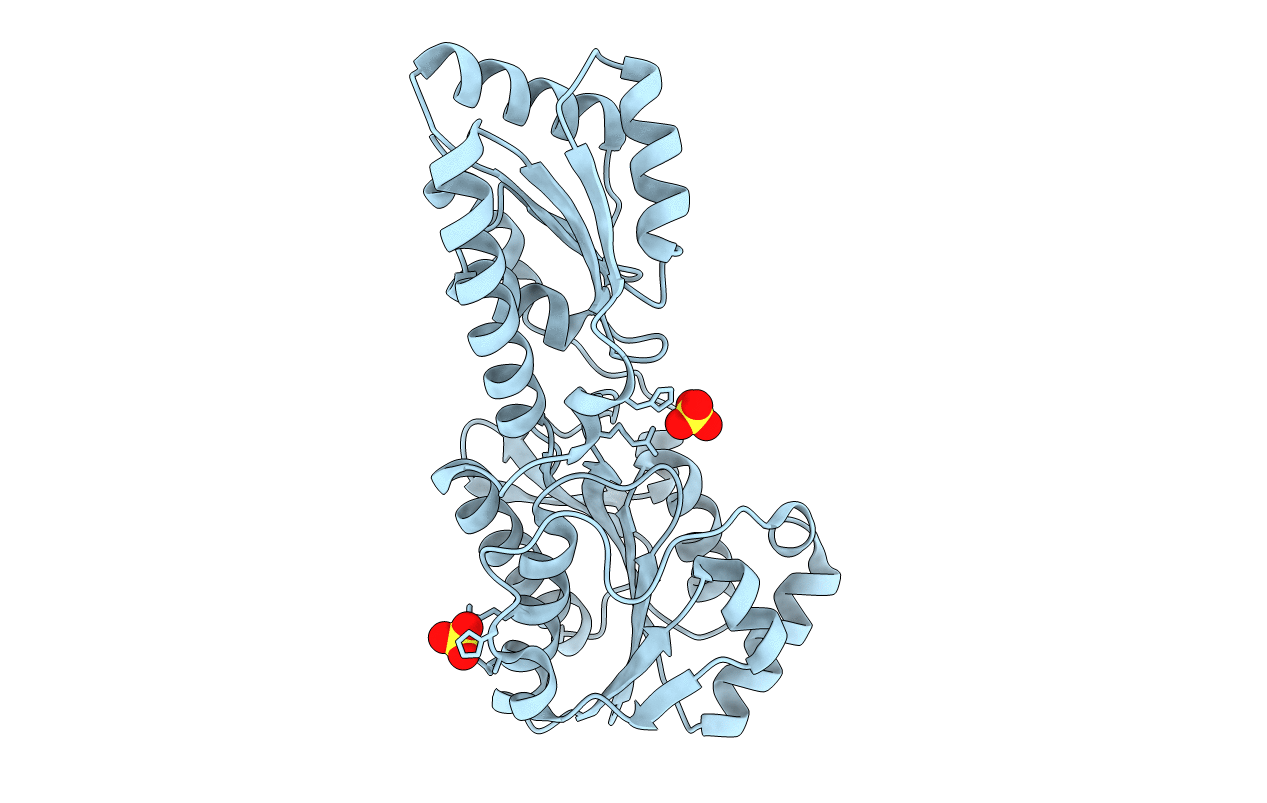
Deposition Date
2005-06-09
Release Date
2005-11-08
Last Version Date
2024-02-14
Entry Detail
PDB ID:
1ZXX
Keywords:
Title:
The crystal structure of phosphofructokinase from Lactobacillus delbrueckii
Biological Source:
Source Organism:
Lactobacillus delbrueckii subsp. bulgaricus (Taxon ID: 1585)
Host Organism:
Method Details:
Experimental Method:
Resolution:
1.85 Å
R-Value Free:
0.25
R-Value Work:
0.22
R-Value Observed:
0.22
Space Group:
P 62 2 2


